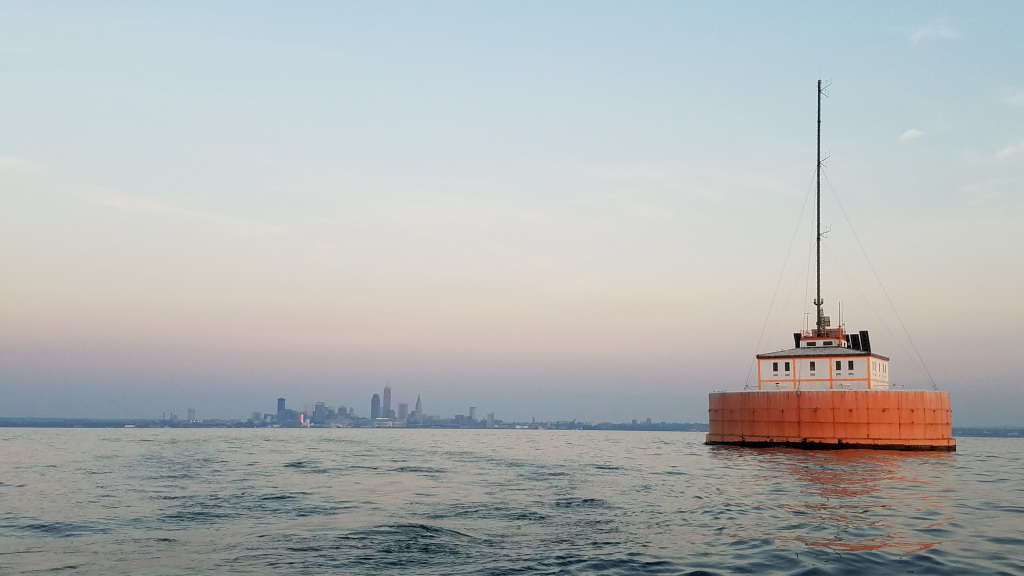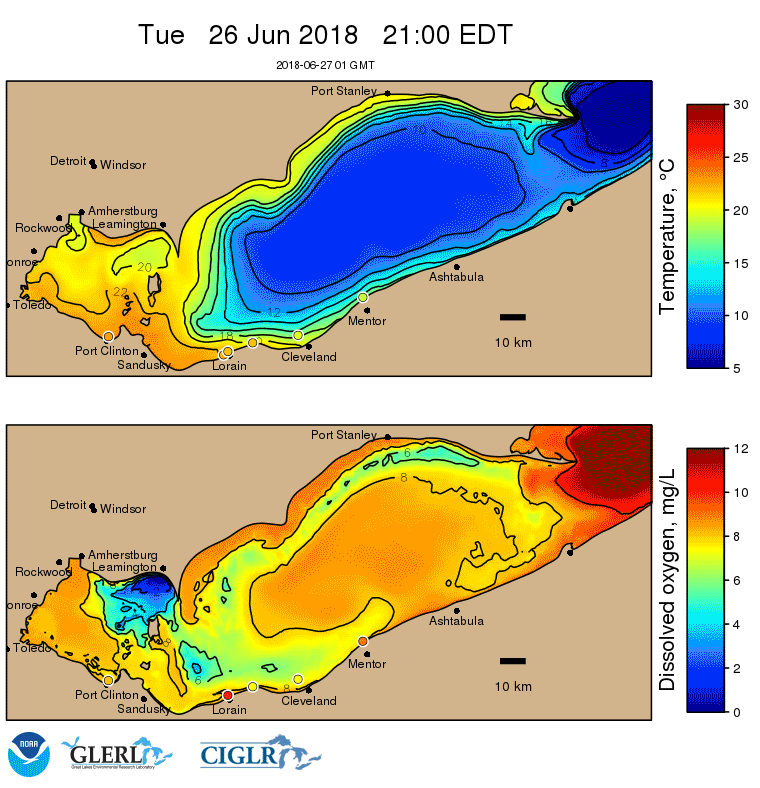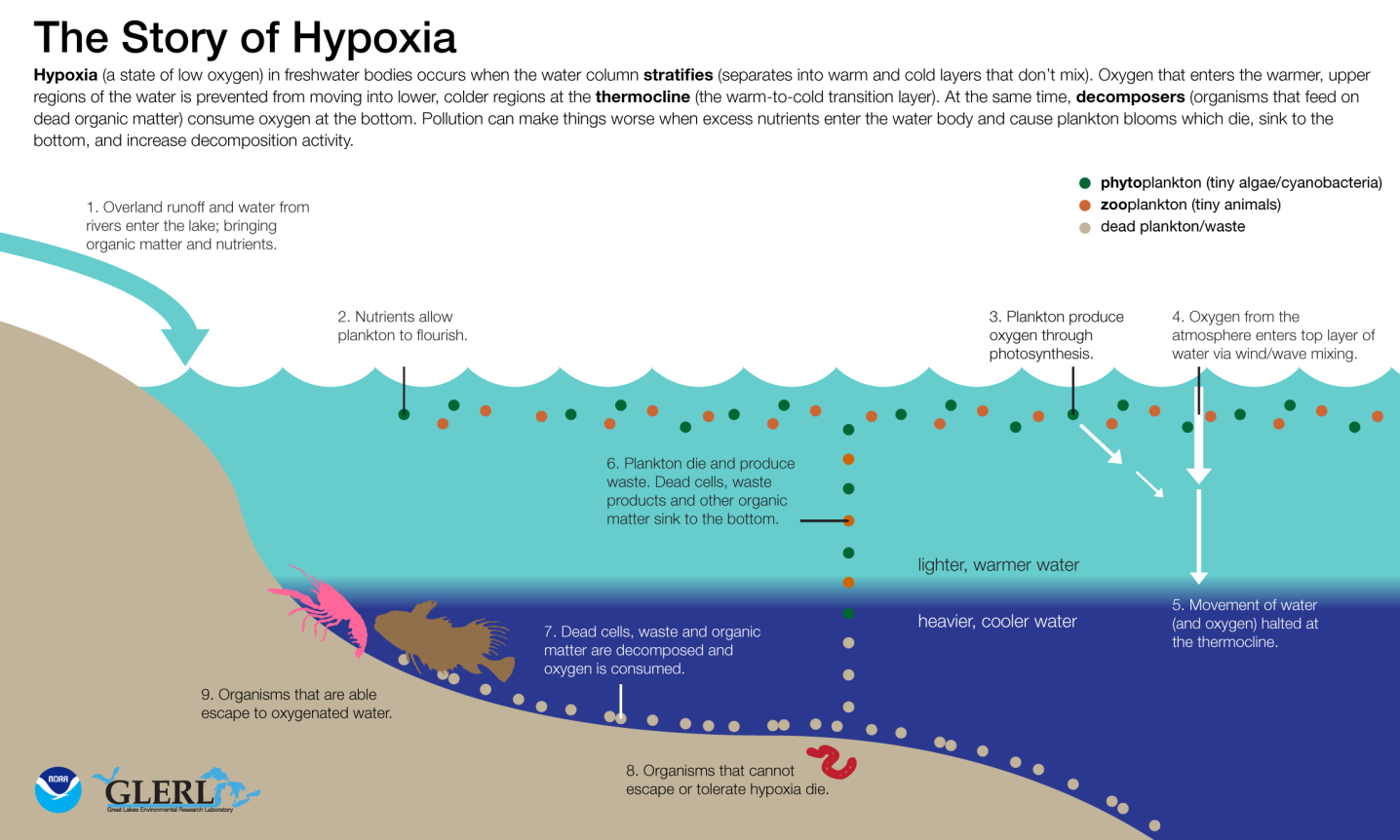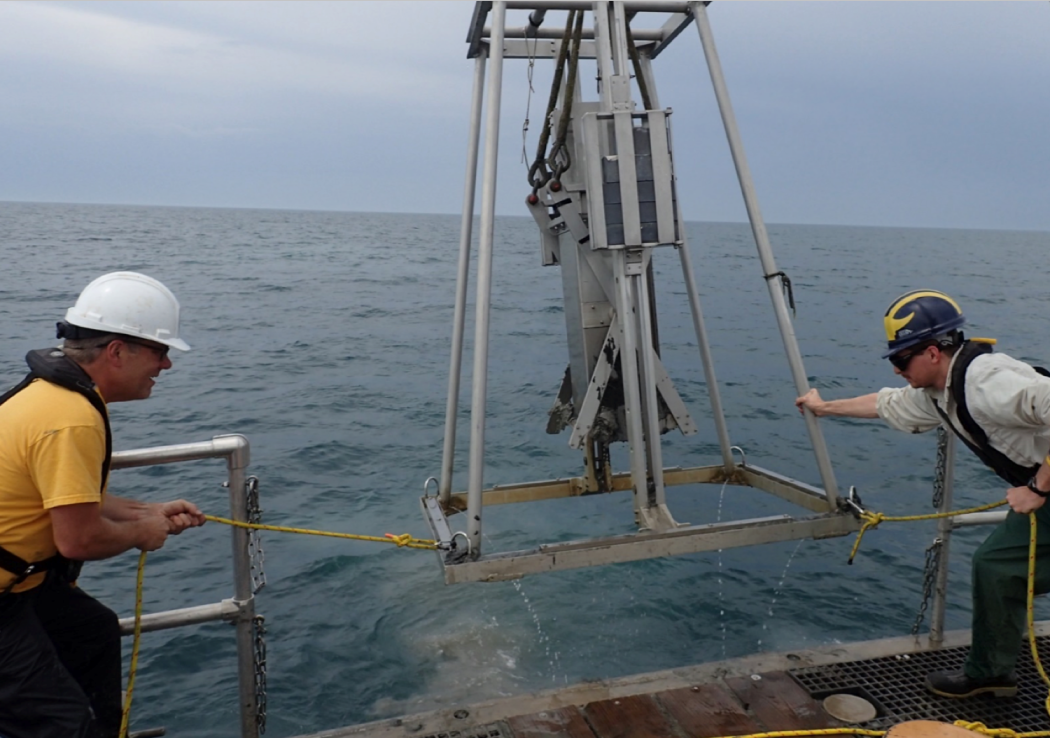[A buoy near the Cleveland Water intake, approximately 3.5 miles off the Cleveland shoreline, gives researchers at NOAA’s Great Lakes Environmental Laboratory the ability to incorporate water temperature, pH, turbidity, dissolved oxygen and other parameters into their Experimental Hypoxia Forecast model. Model results are helping water treatment managers anticipate and respond to changes in lake water quality. Photo courtesy of Ed Verhamme, Limnotech]
[NOAA] A new generation of high-tech buoys and new NOAA models are working together to keep the water safe to drink for more than 1.5 million Cleveland Water customers.
https://www.youtube.com/watch?v=dsc29LZ8F9Y
The network of buoys in Lake Erie – some from NOAA, some from LimnoTech and other private companies – are measuring vital criteria such as dissolved oxygen levels, water temperature, pressure, wind speed and direction that when input into experimental NOAA models, alert NOAA scientists when water with low-oxygen levels and/or harmful algae moves close enough to the Cleveland water intake systems to contaminate the drinking water.

[Cleveland skyline and Cleveland Water Intake Crib. Daily, about 165 million gallons of water leaves Lake Erie through the crib to the pump station, where the water will begin treatment before it flows to other water facilities. Photo Credit: Ed Verhamme, Limnotech.]
An inter-agency team of public and private sector partners, working with the Cleveland Water Department, are addressing drinking water safety for oxygen depleted waters (hypoxia). By leveraging NOAA’s operational National Weather Service and National Ocean Service forecast models and remote sensing for the Great Lakes, NOAA’s latest experimental forecast models developed by its Great Lakes Environmental Research Laboratory can predict when water affected by harmful algal blooms and hypoxia may be in the vicinity of drinking water intake pipes. Advance notice of these conditions allows water managers to change their treatment strategies to ensure the health and safety of drinking water.

[Retrospective animation of the Experimental Lake Erie Hypoxia Forecasts from the 2018 season, showing the predicted change in bottom temperature and dissolved oxygen.]
“Hypoxia occurs when a lot of organic material accumulates at the bottom of the lake and decomposes. As it decomposes, it sucks oxygen from the water, can discolor the water and allow for metals to concentrate,” explains Devin Gill, stakeholder engagement specialist for NOAA’s
Cooperative Institute for Great Lakes Research, hosted at the University of Michigan.
Low dissolved oxygen on its own is not a problem for water treatment. However, low oxygen is often associated with a high level of manganese and iron in the bottom water that then leads to drinking water color, taste, and odor problems. In addition, the same processes that consume oxygen also lower pH and, if not corrected, could cause corrosion in the distribution system, potentially elevating lead and copper in treated water.

“Periodically, this water with depleted oxygen gets pushed up against the shoreline and the drinking water intakes pipes,” said Craig Stow, senior research scientist for NOAA’s Great Lakes Environmental Research Laboratory. “We have buoys stationed at various places and those guide our models to let us know when conditions are right for upwellings that would move this hypoxic water into the vicinity of the drinking water intakes.”

[
CIGLR Mechanical Technician, Russ Miller, and Research Associate, Dack Stuart retrieve a sediment core from Lake Erie, near the Cleveland Water Intake Crib. Photo Credit: CIGLR]
NOAA provides advanced warning of these events so that drinking water plant managers can effectively change their treatment strategies to address the water quality, which is a huge benefit in the water treatment industry.
 “Periodically, this water with depleted oxygen gets pushed up against the shoreline and the drinking water intakes pipes,” said Craig Stow, senior research scientist for NOAA’s Great Lakes Environmental Research Laboratory. “We have buoys stationed at various places and those guide our models to let us know when conditions are right for upwellings that would move this hypoxic water into the vicinity of the drinking water intakes.”
“Periodically, this water with depleted oxygen gets pushed up against the shoreline and the drinking water intakes pipes,” said Craig Stow, senior research scientist for NOAA’s Great Lakes Environmental Research Laboratory. “We have buoys stationed at various places and those guide our models to let us know when conditions are right for upwellings that would move this hypoxic water into the vicinity of the drinking water intakes.”
 [CIGLR Mechanical Technician, Russ Miller, and Research Associate, Dack Stuart retrieve a sediment core from Lake Erie, near the Cleveland Water Intake Crib. Photo Credit: CIGLR]
NOAA provides advanced warning of these events so that drinking water plant managers can effectively change their treatment strategies to address the water quality, which is a huge benefit in the water treatment industry.
[CIGLR Mechanical Technician, Russ Miller, and Research Associate, Dack Stuart retrieve a sediment core from Lake Erie, near the Cleveland Water Intake Crib. Photo Credit: CIGLR]
NOAA provides advanced warning of these events so that drinking water plant managers can effectively change their treatment strategies to address the water quality, which is a huge benefit in the water treatment industry.

